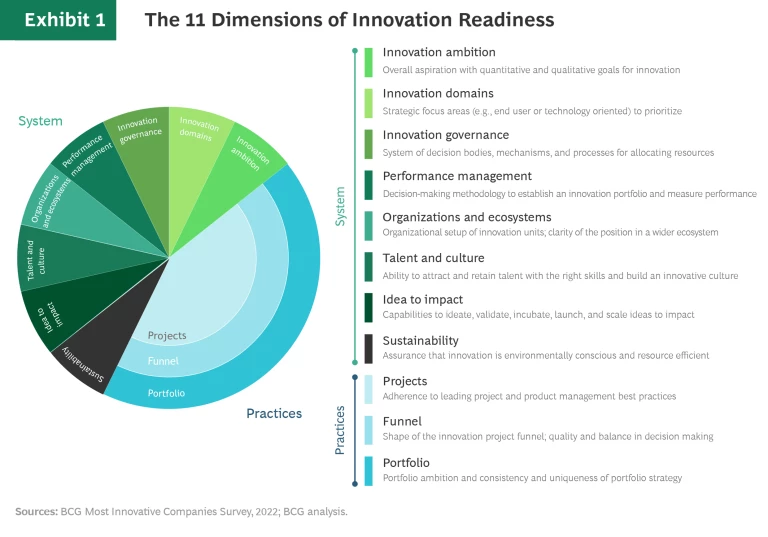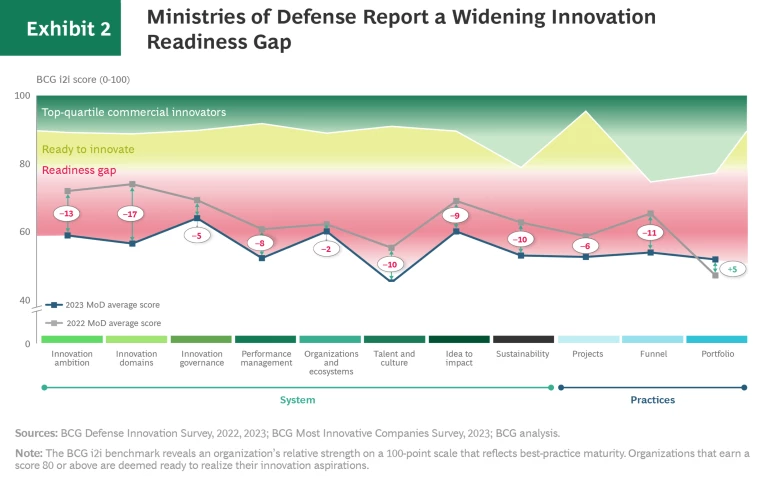Around the world, ministries of defense (MoDs) understand the imperative to innovate but often struggle to meet their objectives. Unfortunately, this innovation readiness gap—the gap between ministries’ aspirations for innovation and their ability to generate such results—is widening.

In 2021, the Munich Security Conference (MSC) Innovation Board and Boston Consulting Group (BCG) conducted a comprehensive review of defense ministries’ innovation activities across 59 countries. A study based on the results of that review, which we published in 2022, quantified for the first time the innovation readiness gap. In late 2022, we conducted a second comprehensive review looking at the same 11 dimensions of readiness. (See Exhibit 1.) The MSC-BCG study team sent a survey to the same group of 59 ministries of defense, the European Union, and NATO, enabling MoDs to compare their current innovation readiness to their previous year’s performance, and to that of their private-sector counterparts.
The findings from the new study appear in more complete detail in our full report. One of its most important findings is that the defense innovation readiness gap significantly increased in the year since our first study. Across 10 of the 11 dimensions of readiness assessed, MoDs failed to match their 2021 results, by an average of 8%. (See Exhibit 2.)

Interviews with more than two dozen leading public- and private-sector defense leaders worldwide validate these findings and highlight the role that several seismic shocks—particularly the war in Ukraine, supply chain vulnerabilities, proliferating cyber threats, and major climate events—have played during the past year in shifting innovation priorities and exposing new cracks in innovation capabilities. In short, the increasingly complex operating environment is creating new urgency for MoDs to innovate more effectively.
In addition to implementing the recommendations that we made in last year’s report, MoDs should take five tangible actions to close the innovation readiness gap:
- Rebalance the innovation portfolio with a greater focus on operational outcomes and fielding fast.
- Access untapped value and de-risk programs through superior insight into supplier economics.
- Expand the definition of interoperability beyond the development of new technologies to include acquisition, operations, and sustainment of legacy products.
- Reinforce cyber defenses across the entire innovation ecosystem.
- Benefit from the increasing investments in climate and sustainability innovations.
Efforts to close the innovation readiness gap cannot succeed unless MoDs implement these five actions at every level of the organization. For this reason, MoD leaders must aggressively prioritize implementation and ensure that everyone—from leadership to day-to-day program executors—has direction and a role to play in achieving the strategic objectives.
The stakes are rising, and MoDs must act now before the innovation readiness gap widens further.






